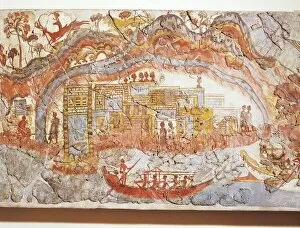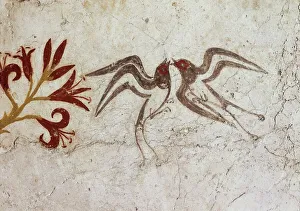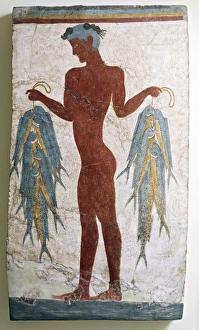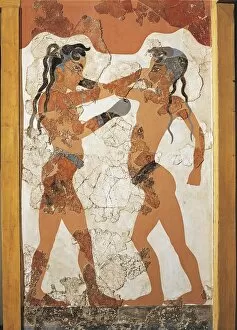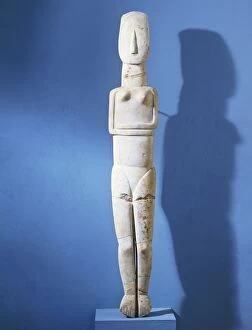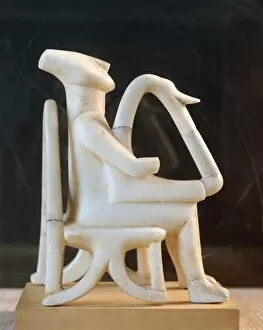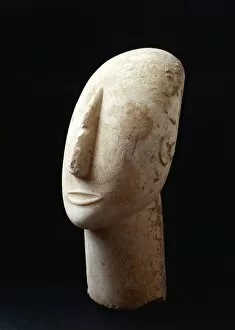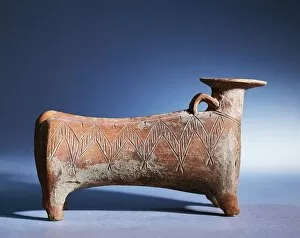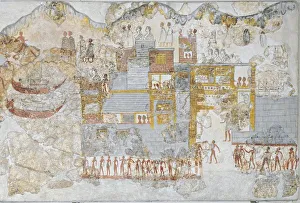Cycladic Civilization Collection
The Cycladic civilization, a remarkable Greek civilization, left behind an array of captivating artifacts that provide us with glimpses into their rich cultural heritage
All Professionally Made to Order for Quick Shipping
The Cycladic civilization, a remarkable Greek civilization, left behind an array of captivating artifacts that provide us with glimpses into their rich cultural heritage. One such artifact is a fresco depicting a ship procession from Akrotiri on Thera Island in Santorini, Greece. The vibrant colors and intricate details transport us back to the ancient times when maritime activities played a significant role in their society. Another fascinating fresco showcases the arrival of spring, also from Akrotiri on Thera Island. The delicate brushstrokes capture the essence of renewal and rejuvenation that accompanied this season for the Cycladic people. It serves as a testament to their deep connection with nature and its cyclical patterns. A depiction of a fisherman further highlights the importance of fishing in their daily lives. This fresco from Akrotiri portrays the skillful artistry involved in this occupation and sheds light on how they relied on marine resources for sustenance. The fleet of ships depicted in another Thera fresco offers insights into their advanced seafaring capabilities. These vessels were not only means of transportation but also symbols of power and trade within the Southern Cyclades Islands. Moving away from frescoes, we encounter marble statues like "Harpist" or "Lyre Player. " This exquisite piece showcases their mastery over sculpture while providing clues about music's significance within their culture. Intriguingly, there is also evidence suggesting religious practices through depictions like that of a priestess burning incense at Akrotiri. Such rituals were integral to connecting with divine forces and seeking spiritual guidance during those times. Additionally, we come across an impressive marble idol standing at 148 cm tall from Amorgos island—a testament to skilled craftsmanship prevalent throughout various regions under Cycladic influence. Lastly, an amphora showcasing Apollo and Artemis reminds us of their reverence for deities who governed different aspects of life—Apollo representing music, poetry, healing, and Artemis symbolizing the wilderness, hunting, and childbirth.

